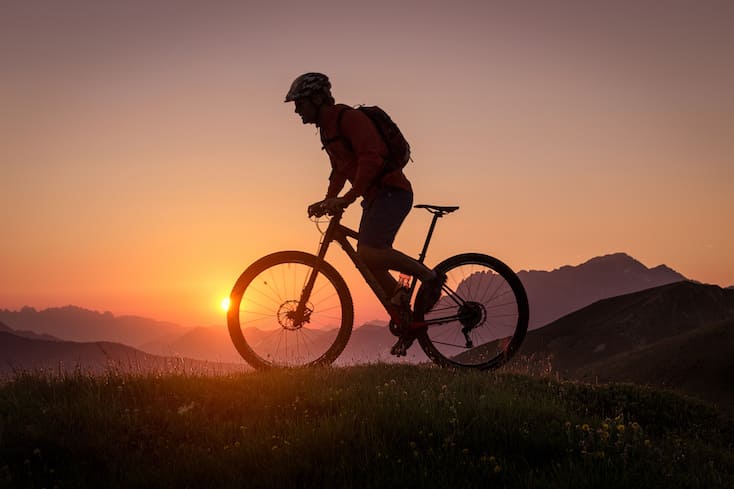April 16, 2021
By Calvin Smith

I am a 50-year old American veteran and I am here to tell you about my struggle with PTSD and how biking has helped me manage my condition. I joined the military in 1994 and served for 23 years. Having come from a military family, I was thrilled to serve my country, especially in the Afghan Civil War. But, as I later came to learn, the Taliban hunting me daily, IEDs exploding all around me and mingling with suicide bombers isn’t thrilling at all. The horrors of war have lived with me long after I’ve left the battlefield.
When I got back home, at first, I was happy to see my family. But then the horrors began shortly after. I gradually began to get frustrated with everyone and everything in my life. I had trouble sleeping and when I could fall asleep, I often would oversleep hoping to never wake up.
Thankfully, against my will, my wife took me to a psychiatrist who diagnosed me with PTSD. I was put on medication, exposure treatment and psychotherapy. When I showed slow signs of recovery, my doctor suggested that I indulge in more physical activity. I chose biking and boy did it work wonders for me! If you are struggling with PTSD, here is how biking can help.
PTSD made me experience intrusive thoughts all the time — from the desire to harm others to suicide. These thoughts made my heart race and I would sweat profusely. These thoughts stopped since I’ve started biking. My doctor says that routine cycling makes me concentrate on new impulses, which then suppress the fear and thoughts that cause chronic anxiety.
Biking helped me feel alive again. Although, along the way, I discovered riding an “old-fashioned” bicycle began hurting my knees and back. Fortunately, a friend introduced me to a motorized bicycle, which has not only made cycling feel more effortless, but it has allowed me to actually increase the amount of time I’m able to spend biking outdoors. Being able to interact with nature gives me a sense of purpose and a reason to live and enjoy life. The smiles I get from my friendly neighbors as I cycle around the block give me all the reassurance I need that life is worthy and precious.
Biking gives me a chance to experience temperature changes as I pass frozen lakes and nature trails. Bumps along the road make me experience a rush of both adrenaline and dopamine, which makes me feel energized and alert. All these things have really helped me overcome my symptoms.
Three months into cycling, I joined a local club where other veterans were working out their way to recovery. We would go biking together and share stories of our days in active duty. Hanging out with my fellow veterans also minimized the feeling of isolation. The peer support system I get from being surrounded by people who are going through the same experiences as I have helped me abstain from substance abuse and other practices that would inhibit my recovery. Additionally, seeing other people in my group recover and go back to their normal lives gives me the incentive I need to keep working hard.
Riding a bicycle is like dynamic meditation. It forces the rider to stay alert and focused on the traffic, road conditions and, of course, the bike. It reminds the rider to always focus on the present as opposed to worrying about the future or dwelling on a traumatic past. Biking did that for me. It helps me calm down just like meditation would. This kind of dynamic meditation helps clear my mind so that I don’t get as restless as PTSD made me feel.
As I battled PTSD, I also gained a lot of weight and became overweight within a short time. My doctor said that the weight gain was related to the over-activation of stress hormones, which interfered with my body’s metabolism. I remember eating tons of junk during that time just to cope with my stress. Given that I couldn’t bring myself to perform any other form of exercise, or have the courage to go to the gym, it’s biking that helped me stay fit. By the time my PTSD subsided, I was physically and mentally back to my old self.
Often, people are shy to talk about their mental health for fear of stigma. However, if you are battling PTSD, there is no shame in asking for help when you need it. Getting the help I needed got me on the path to recovery, and led me to a hobby that saved me from the depths of PTSD.
Calvin is a 50-year old American veteran, now working as an English teacher in a primary school. Calvin is known by people as a person who lives his life dedicated to a healthy lifestyle and someone really into sports. He always tells others that no matter the age if you have the courage you will have the conduction to be active physically. Calvin enjoys sharing his personal story with people on how his PTSD subsided and what he did for it. He is also a good writer that likes to reach different audience through his topics.
We’re always accepting submissions to the NAMI Blog! We feature the latest research, stories of recovery, ways to end stigma and strategies for living well with mental illness. Most importantly: We feature your voices.
LEARN MORENAMI HelpLine is available M-F, 10 a.m. – 10 p.m. ET. Call 800-950-6264,
text “NAMI” to 62640, or email. In a crisis, call or text 988 (24/7).